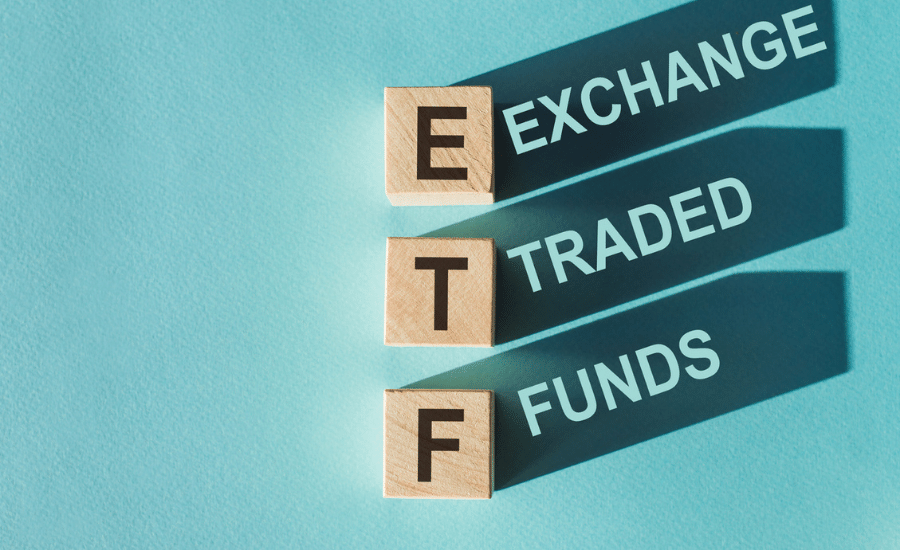ETFs Are Everywhere — But Are They Right for You?
Exchange-Traded Funds (ETFs) have become the go-to choice for both beginner and experienced investors. They promise low fees, instant diversification, and easy access to the market.
But while ETFs are powerful tools, they’re not a one-size-fits-all solution. In this article, we’ll explain:
- What ETFs actually are
- Why they’re popular
- The risks you should know about
- How to decide if they suit your investment strategy
Let’s take a closer look beyond the hype.
What Is an ETF?
An ETF, or Exchange-Traded Fund, is a financial product that holds a collection of assets — such as stocks, bonds, or commodities — and trades on the stock market just like an individual share.
Example:
Instead of buying one stock, such as Apple, you can buy an ETF that gives you exposure to hundreds of companies in a single transaction.
One of the most popular examples is the S&P 500 ETF, which tracks the performance of the 500 largest publicly traded companies in the U.S.
Why ETFs Are Popular With Investors
1. Instant Diversification
ETFs spread your investment across many companies or assets. This reduces your exposure to the failure of any single company or sector.
2. Low Fees
Most ETFs charge very low expense ratios, typically between 0.03% and 0.20%.
In contrast, traditional mutual funds often charge 1% or more. Over time, those fee savings can translate into thousands of euros.
3. Passive Investment Made Easy
ETFs are ideal for long-term, passive investors. You can simply buy, hold, and let the market work over time—no need for constant trading or market timing.
4. Broad Access and Flexibility
Available through nearly every brokerage platform (e.g., Vanguard, eToro, Trading 212), ETFs allow fractional investing. That means you can start investing with as little as €20.
But ETFs Are Not Perfect — Here’s What to Watch Out For
1. Not All ETFs Are Safe
While many ETFs are built for broad, stable exposure, others are highly speculative. For example:
- Sector-specific ETFs (e.g., cannabis or AI)
- Leveraged ETFs (which amplify both gains and losses)
- Thematic or meme-focused ETFs
Always check the fund’s holdings and structure before investing.
2. You Can Still Lose Money
ETFs are tied to market performance. If the overall market drops, so does your ETF. They reduce risk but do not eliminate it.
3. False Sense of Security
Many beginners assume that ETFs are “set and forget.” While that’s mostly true for broad-market funds, you still need to understand what you’re buying and how it fits into your financial goals.
4. Too Many Choices Can Be Confusing
There are thousands of ETFs available — tracking everything from global indexes to niche trends. Without research, it’s easy to pick a fund that doesn’t align with your risk tolerance or objectives.
When ETFs Make Sense
ETFs are a great fit if:
- You want low-cost, long-term exposure to the stock market
- You prefer a passive investment strategy
- You want to avoid choosing individual stocks
- You don’t plan to hire a financial advisor
Recommended examples:
- Vanguard S&P 500 ETF (VOO / VUSA)
- iShares Core MSCI World (IWDA)
- Vanguard Total Stock Market ETF (VTI)
- SPDR S&P Dividend ETF (SDY)
These funds offer broad, stable exposure to established markets and are suitable for long-term investors.
When ETFs Might Not Be Right for You
Consider avoiding ETFs if:
- You’re trying to beat the market in the short term
- You enjoy active trading and company analysis
- You don’t understand the underlying holdings
- You panic easily during market volatility
For some investors, ETFs may feel too passive or abstract.
Are ETFs Overrated?
No — but they’re often oversimplified.
ETFs are among the best financial tools available to modern investors, especially for building wealth quietly over time. But they require basic financial literacy, a clear plan, and a long-term mindset.
Think of ETFs as slow cookers: low maintenance, highly effective — as long as you know what ingredients are inside.
Final Thoughts: ETFs Are Tools, Not Magic
Used properly, ETFs can:
- Provide instant diversification
- Minimize investment costs
- Build long-term financial security



